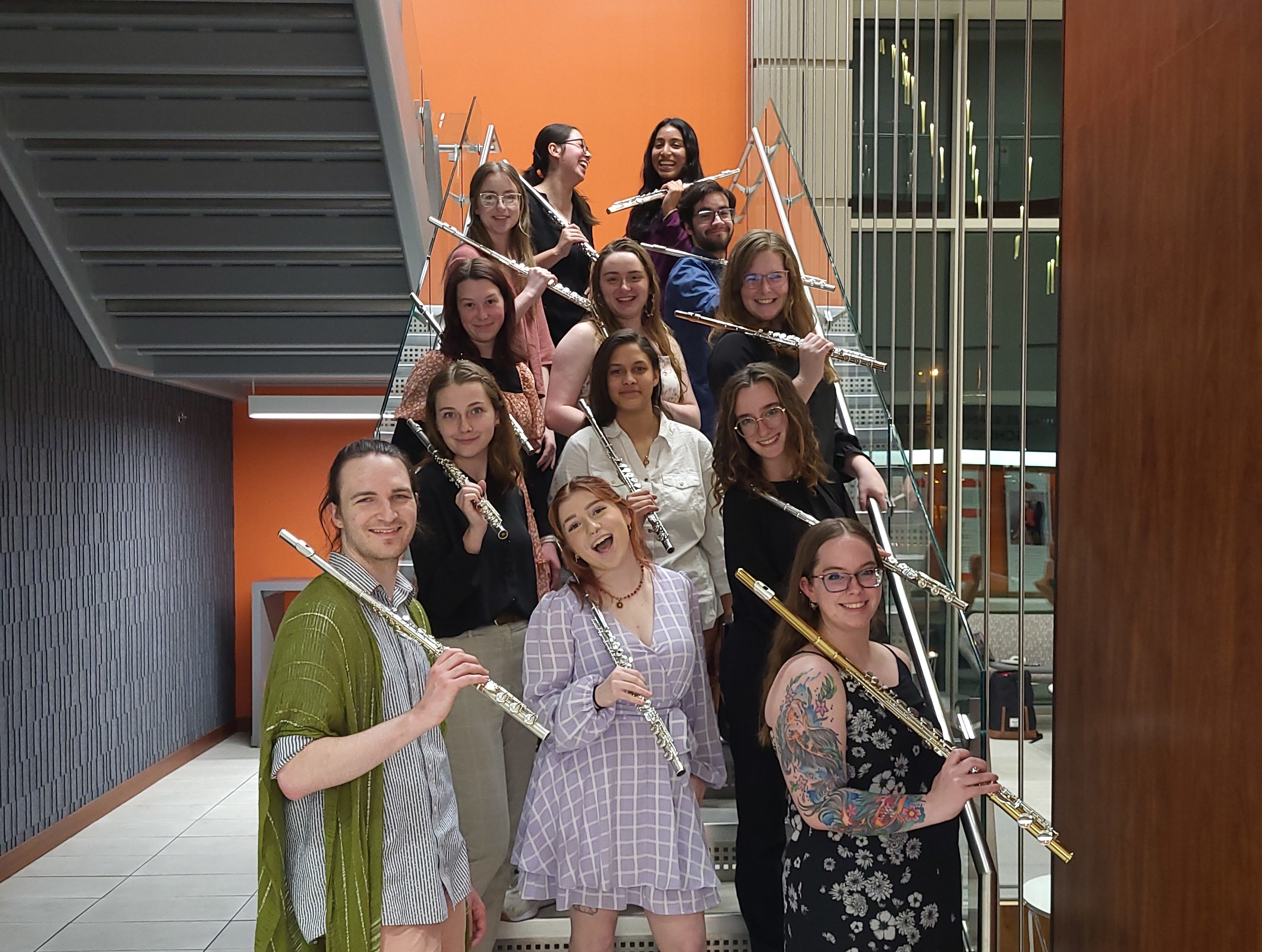This project is now in update mode. Check back regularly to see how things are progressing.
Brad Eveatt
In Honor of Ashlie Gold
$50
Apr 26, 2024
Monica Santillan
In Honor of Noah Pool
$25
Apr 26, 2024
Anonymous
$2,500
Apr 25, 2024
Jeremiah
Konop
$500
Apr 25, 2024
Ashlie Gold
In Honor of The Flute Ensemble Bake Sale!
$269
Apr 24, 2024
Patti
Ford
$100
Apr 19, 2024
Danasia
Mitchell
$10
Apr 18, 2024
Micah
Hartwig
$200
Apr 17, 2024
Dylan
Halliday
$10
Apr 17, 2024
Paula Cahill
In Honor of Dr. Erin Murphy
$100
Apr 17, 2024
Amelia Larson
In Honor of Stefanie Gazzana
$25
Apr 13, 2024
Anonymous
$10
Apr 12, 2024
Anonymous
Michael
Griffith
$25
Apr 10, 2024
Debbie
Gimlin
Laura
Ketchum
Krista
Mckelvey
$25
Apr 10, 2024
Steven
Schultz
$25
Apr 10, 2024
Caitlyn
Valovick-Moore
$100
Apr 03, 2024
James Murphy
In Memory of Paul Bochar
$50
Apr 03, 2024
Mady
Hendryx
$25
Apr 03, 2024
Lanette Compton
In Honor of Rosalyn Hodge for all her help with the horn workshop
$100
Apr 03, 2024
Tami Crowley
In Honor of Sarah Johnson
$50
Apr 03, 2024
Tanya
Cromer
$100
Apr 02, 2024
Jennifer Robb
In Honor of Ashlie Gold
$500
Mar 27, 2024
$10
Ancient
One of the oldest instruments discovered by archaeologists is a flute made out of animal bone. It is dated to be many thousands of years old!
$25
Medieval
The flute is commonly portrayed in Medieval artwork as a horizontally blown flute with six holes, as opposed to the vertically blown recorder. Most commonly used in secular music (outside of the church), the flute would have been used in dance music!
$50
Renaissance
In the renaissance, the most popular flute was in the form of a blockflöte, more often referred to as a recorder. These instruments were played in consorts, recorder ensembles that included many different ranges of vertical flutes from contrabass (very large) to garklein (very small)!
$100
Baroque
Traverso, known more commonly as baroque flute, begins to resemble its modern counterparts. Many of the oldest pieces of flute ensemble repertoire were written in this era, such as the Boismortier Concertos for five flutes.
$250
Classical
The flute was used commonly in operas, symphonies, and as a solo instrument quite often in the Classical era. The most commonly called for work at auditions is Wolfgang Amadeus Mozart's Concerto in G major, a piece that most flutists know fondly!
$500
Romantic
The flute lost popularity throughout this era but regained it toward the latter half due to the prevalence of the Paris Conservatory. Near the turn of the 20th century, much of the repertoire that is commonly played today was written for the instrument as we know it today. German inventor and avid musician Theobald Böhm helped to modernize and revive this instrument, many developments of which have been left unchanged!
$750
Modern
The bridge between the Romantic and Modern eras brought about Impressionist and Expressionist movements in both art and music. Composers like Debussy and Ravel used the flute to represent various aspects of nature as in the Afternoon of a Faun or the ballet Daphnis and Chloe, respectively!
$1,000
Contemporary
The stable version of the flute led to much experimentation with odd sounds. In addition, technology as we know it today brought a new medium of which to make music. So between experimental works with electronics, neo-classical and neo-romantic works, and everything in between, there is music written today for just about everyone's taste!









